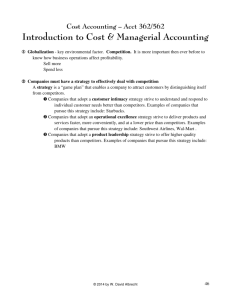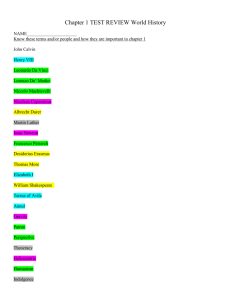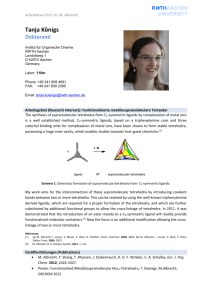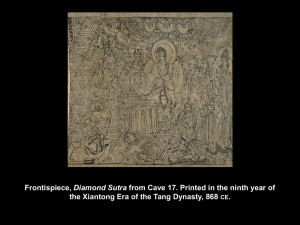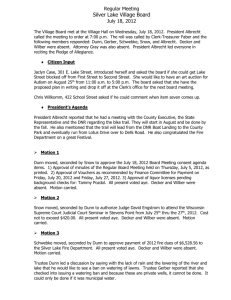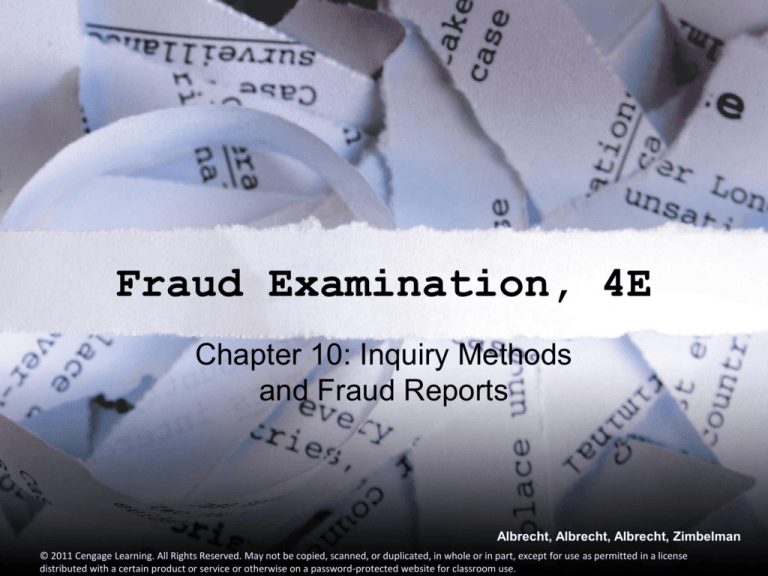
Fraud Examination, 4E
Chapter 10: Inquiry Methods
and Fraud Reports
Albrecht, Albrecht, Albrecht, Zimbelman
© 2011 Cengage Learning. All Rights Reserved. May not be copied, scanned, or duplicated, in whole or in part, except for use as permitted in a license
distributed with a certain product or service or otherwise on a password-protected website for classroom use.
Learning Objectives
Understand the interviewing process.
Plan and conduct an interview.
Understand the nature of admission-seeking
interviews.
Describe the different deceptions and lies used by
perpetrators.
Describe the different types of honesty testing.
Prepare a fraud report.
Albrecht, Albrecht, Albrecht, Zimbelman
© 2011 Cengage Learning. All Rights Reserved. May not be copied, scanned, or duplicated, in whole or in part, except for use as permitted in a license
The Interviewing Process
An interview is :
the most common technique used to
investigate and resolve fraud
a question-and-answer session designed
to elicit information
a structured (not free-form) conversation
that has a purpose
the systematic questioning of individuals
who have knowledge of events, people,
and evidence of a case
Albrecht, Albrecht, Albrecht, Zimbelman
© 2011 Cengage Learning. All Rights Reserved. May not be copied, scanned, or duplicated, in whole or in part, except for use as permitted in a license
The Interviewing Process
Interviews also help obtain:
information that establishes the essential
elements of the crime
leads for developing cases and gathering
other evidence
the cooperation of victims and witnesses
information on the personal backgrounds
and motives of witnesses
Albrecht, Albrecht, Albrecht, Zimbelman
© 2011 Cengage Learning. All Rights Reserved. May not be copied, scanned, or duplicated, in whole or in part, except for use as permitted in a license
The Interviewing Process
Three types of interviewees:
Friendly Interviewees
Go beyond normal expectation to help out
Neutral Interviewees
Have nothing to gain or lose from the interview
Have no hidden motives or agendas
Hostile Interviewees
Are often associated in some way with the suspect or
the crime
Should be questioned without prior notice
Albrecht, Albrecht, Albrecht, Zimbelman
© 2011 Cengage Learning. All Rights Reserved. May not be copied, scanned, or duplicated, in whole or in part, except for use as permitted in a license
The Interviewing Process
Characteristics of a Good Interview
Sufficient length and depth
Focus on pertinent information
Should end on a positive note
Should be conducted soon after the event
Should be objective
Endeavor to gather information in a fair
and impartial manner
Albrecht, Albrecht, Albrecht, Zimbelman
© 2011 Cengage Learning. All Rights Reserved. May not be copied, scanned, or duplicated, in whole or in part, except for use as permitted in a license
The Interviewing Process
Characteristics of a Good Interviewer
Outgoing personalities
Interact well with others
Help others feel at ease
Do not interrupt respondents unnecessarily
Display interest in the subject and in what is
being said
Phrase questions in a non-accusatory manner
Albrecht, Albrecht, Albrecht, Zimbelman
© 2011 Cengage Learning. All Rights Reserved. May not be copied, scanned, or duplicated, in whole or in part, except for use as permitted in a license
The Interviewing Process
Characteristics of a Good Interviewer
Demonstrate a lack of bias
Be on time
Attired professionally
Deal fairly with respondents
Albrecht, Albrecht, Albrecht, Zimbelman
© 2011 Cengage Learning. All Rights Reserved. May not be copied, scanned, or duplicated, in whole or in part, except for use as permitted in a license
Understanding Reaction to
Crisis
Sequence of Reaction
Stage 1. Denial
Acts as a “shock absorber”
In the denial stage, people…
appear temporarily stunned or dazed
refuse to accept the information given
insist that there is some mistake, or
fail to comprehend what has been said.
Albrecht, Albrecht, Albrecht, Zimbelman
© 2011 Cengage Learning. All Rights Reserved. May not be copied, scanned, or duplicated, in whole or in part, except for use as permitted in a license
Understanding Reaction to
Crisis
Stage 2. Anger
A dangerous time to resolve frauds
Suspects direct their anger at friends, relatives,
coworkers and/or self
Others can insult, harm, slander, or libel suspects and
may terminate them without due cause
Albrecht, Albrecht, Albrecht, Zimbelman
© 2011 Cengage Learning. All Rights Reserved. May not be copied, scanned, or duplicated, in whole or in part, except for use as permitted in a license
Understanding Reaction to
Crisis
Stage 3. Bargaining & Rationalization
People attempt to justify the dishonest act and/or to
minimize the crime
Leads to failure to prosecute, easy penalties, and weak
testimonies
Interviews can be detrimental to attempts to uncover
the truth
Albrecht, Albrecht, Albrecht, Zimbelman
© 2011 Cengage Learning. All Rights Reserved. May not be copied, scanned, or duplicated, in whole or in part, except for use as permitted in a license
Understanding Reaction to
Crisis
Stage 4. Depression
Many withdraw or lose interest
People no longer deny or rationalize the dishonest act
Anger is replaced by a sense of loss and
disappointment
People often become withdrawn and uncooperative
Albrecht, Albrecht, Albrecht, Zimbelman
© 2011 Cengage Learning. All Rights Reserved. May not be copied, scanned, or duplicated, in whole or in part, except for use as permitted in a license
Understanding Reaction to
Crisis
Stage 5. Acceptance
Acknowledgement of what happened
A desire to resolve the issue and move on
Interviews are most useful and witnesses most
cooperative
Albrecht, Albrecht, Albrecht, Zimbelman
© 2011 Cengage Learning. All Rights Reserved. May not be copied, scanned, or duplicated, in whole or in part, except for use as permitted in a license
Understanding Reaction to
Crisis
Individuals go through the five stages differently
Individuals can cycle through the emotions of
denial, anger, rationalization, and depression a
number of times
Albrecht, Albrecht, Albrecht, Zimbelman
© 2011 Cengage Learning. All Rights Reserved. May not be copied, scanned, or duplicated, in whole or in part, except for use as permitted in a license
Planning an Interview
Follow a plan or outline to meet your
objectives
Review relevant documents to gather as
much information as possible
Conduct interviews at the interviewee’s
office (except for hostile interviewees)
Set up an appointment
Plan sufficient (even excess) time for the
interview
Albrecht, Albrecht, Albrecht, Zimbelman
© 2011 Cengage Learning. All Rights Reserved. May not be copied, scanned, or duplicated, in whole or in part, except for use as permitted in a license
Conducting an Interview
Interviewer’s Demeanor
Be efficient, courteous, polite, and careful with language
used during interviews
Do not talk down to the person
Language of Interviews
Use short questions, confined to one topic, which can be
clearly and easily understood.
Maintain full control of the interview
Albrecht, Albrecht, Albrecht, Zimbelman
© 2011 Cengage Learning. All Rights Reserved. May not be copied, scanned, or duplicated, in whole or in part, except for use as permitted in a license
Conducting an Interview
Question Typology
Interviewers ask five
types of questions:
Introductory
Informational
Assessment
Closing
Admission-seeking
Albrecht, Albrecht, Albrecht, Zimbelman
© 2011 Cengage Learning. All Rights Reserved. May not be copied, scanned, or duplicated, in whole or in part, except for use as permitted in a license
Conducting an Interview
Elements of Conversation
Basic Elements of effective conversation:
Expression
Persuasion
Therapy
Ritual
Information Exchange
Albrecht, Albrecht, Albrecht, Zimbelman
© 2011 Cengage Learning. All Rights Reserved. May not be copied, scanned, or duplicated, in whole or in part, except for use as permitted in a license
Conducting an Interview
Inhibitors of Communication
Competing Demands for
Time
Threatened Egos
Etiquette
Trauma
Forgetting
Chronological Confusion
Inferential Confusion
Unconscious Behavior
Albrecht, Albrecht, Albrecht, Zimbelman
© 2011 Cengage Learning. All Rights Reserved. May not be copied, scanned, or duplicated, in whole or in part, except for use as permitted in a license
Conducting an Interview
Facilitators of Communication
Fulfilling Expectations
Recognition
Altruistic Appeals
Sympathetic Understanding
New Experience
Catharis
Need for Meaning
Extrinsic Rewards
Albrecht, Albrecht, Albrecht, Zimbelman
© 2011 Cengage Learning. All Rights Reserved. May not be copied, scanned, or duplicated, in whole or in part, except for use as permitted in a license
Mechanics of the Interview
Methodology
Make Physical Contact
Establish the Purpose of the Interview
Don’t Interview More than One Person at a
Time
Conduct the Interview in Private
Ask Nonsensitive Questions
Get a Commitment for Assistance
Establish a Transitional Statement\
Seek Continuous Agreement
Do Not Invade Body Space
Albrecht, Albrecht, Albrecht, Zimbelman
© 2011 Cengage Learning. All Rights Reserved. May not be copied, scanned, or duplicated, in whole or in part, except for use as permitted in a license
Mechanics of the Interview
Question Sequence
Questioning should proceed from the
general to the specific; that is, seek
general information before details are
sought
Note Taking
Procedure is especially helpful should
documents from a particular interview be
subpoenaed.
Albrecht, Albrecht, Albrecht, Zimbelman
© 2011 Cengage Learning. All Rights Reserved. May not be copied, scanned, or duplicated, in whole or in part, except for use as permitted in a license
Mechanics of the Interview
Observing Respondent Reactions
Must be knowledgeable about respondents’ behavior during
interviews.
Theme Development
Be sure to formulate your questions in a way that does not
elicit strong emotional reactions.
Transition Methodology
Once the introduction has been completed, transition to the
body of the interview.
Albrecht, Albrecht, Albrecht, Zimbelman
© 2011 Cengage Learning. All Rights Reserved. May not be copied, scanned, or duplicated, in whole or in part, except for use as permitted in a license
Mechanics of the Interview
Volatile Interviews
Typically involve
close friends and
relatives of suspects,
co-conspirators, and
similar individuals.
Albrecht, Albrecht, Albrecht, Zimbelman
© 2011 Cengage Learning. All Rights Reserved. May not be copied, scanned, or duplicated, in whole or in part, except for use as permitted in a license
Physiology of Deception
Detecting Deception
There are no quick
and easy techniques
for detecting
deception; instead,
careful practice and
learning to look for
patterns and
comparison lead to
expertise in this skill.
Albrecht, Albrecht, Albrecht, Zimbelman
© 2011 Cengage Learning. All Rights Reserved. May not be copied, scanned, or duplicated, in whole or in part, except for use as permitted in a license
Physiology of Deception
Verbal and Nonverbal Cues
Extensive academic research suggests that
verbal cues are more reliable predictors of
deception than nonverbal cues.
Cues to deception suggests that liars’ attempts to
appear honest will lead them to exhibit behaviors
in five areas:
Increased tension, less positive and pleasant
interactions, less forthcoming responses, less
compelling tales, and fewer ordinary
imperfections
Albrecht, Albrecht, Albrecht, Zimbelman
© 2011 Cengage Learning. All Rights Reserved. May not be copied, scanned, or duplicated, in whole or in part, except for use as permitted in a license
Honesty Testing
The most common inquiry method is the
interview.
Three other methods exist:
Pencil-and-Paper Test
Graphology
Voice stress analysis and polygraphs.
Albrecht, Albrecht, Albrecht, Zimbelman
© 2011 Cengage Learning. All Rights Reserved. May not be copied, scanned, or duplicated, in whole or in part, except for use as permitted in a license
The Fraud Report
Includes:
Findings
Conclusions
Recommendations
Corrective actions taken
Should be:
Objective
Factual
Unbiased
Free from distortion
Albrecht, Albrecht, Albrecht, Zimbelman
© 2011 Cengage Learning. All Rights Reserved. May not be copied, scanned, or duplicated, in whole or in part, except for use as permitted in a license


